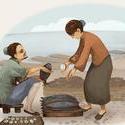-
Welcome to the eG Forums, a service of the eGullet Society for Culinary Arts & Letters. The Society is a 501(c)3 not-for-profit organization dedicated to the advancement of the culinary arts. These advertising-free forums are provided free of charge through donations from Society members. Anyone may read the forums, but to post you must create a free account.
buying and preparing fish/seafood
-
Similar Content
-
Fish and Seafood 1 2 3 4 20
By Adam Balic,
- 490 replies
- 137,399 views
-
- 153 replies
- 38,000 views
-
- 19 replies
- 3,044 views
-
- 145 replies
- 11,121 views
-
- 14 replies
- 2,282 views
-
-
Recently Browsing 0 members
- No registered users viewing this page.





Recommended Posts